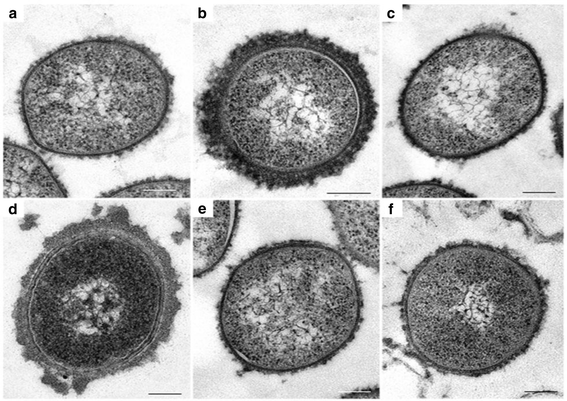Two cases of serotypeable and non-serotypeable variants of Streptococcus pneumoniae detected simultaneously during invasive disease
- PMID: 27342074
- PMCID: PMC4921036
- DOI: 10.1186/s12866-016-0745-0
Two cases of serotypeable and non-serotypeable variants of Streptococcus pneumoniae detected simultaneously during invasive disease
Abstract
Background: More than 94 serotypes of Streptococcus pneumoniae have been described to date, however the majority of disease is caused by approximately 20 serotypes. Some pneumococci do not react with commercially available antisera used for serotyping and are thus regarded as non-serotypeable (NT). These pneumococci are commonly isolated during carriage studies and very rarely cause invasive disease. Colonization may occur with more than one serotype however disease with more than one serotype is rarely detected. Thus there are limited data describing cases of pneumococcal disease caused by more than one isolate.
Results: In two cases of invasive pneumococcal disease in South Africa, a non-serotypeable and a serotypeable isolate were co-detected during routine serotyping. A serotype 1 and 18C isolate were each co-detected with a non-serotypeable isolate in 2009 (case A) and 2010 (case B), from cerebrospinal fluid and blood, respectively. Both patients were 10-14 years old. For case A, the serotypeable isolate could not be obtained due to low representation in the mixed culture. Using electron microscopy we confirmed lack of capsule for the non-serotypeable isolates. Comparison of the case A non-serotypeable isolate with a serotype 1 genome revealed only the presence of the rhamnose biosynthesis genes (rmlA, B, C and D) in the capsular locus, all other capsular genes were absent. Nonetheless it had a multilocus sequence type (ST) associated with serotype 1 (ST217 and ribosomal ST3462) and its core genome clustered with other ST217 isolates. The case B non-serotypeable isolate had all serotype 18C capsular genes except for variation in the wchA and wze genes, compared to the 18C isolate. Both case B isolates were ST9817 and their core genomes were identical.
Conclusions: The ability of pneumococci to alter capsule production is a potential vaccine escape mechanism and therefore non-serotypeable pneumococci should be monitored as such organisms may increase under vaccine pressure.
Keywords: Mixed culture; Non-serotypeable; Pneumococcus; Serotype 1; Serotype 18C; South Africa; cpsE; wchA.
Figures


References
-
- Bentley SD, Aanensen DM, Mavroidi A, Saunders D, Rabbinowitsch E, Collins M, Donohoe K, Harris D, Murphy L, Quail MA, Samuel G, Skovsted IC, Kaltoft MS, Barrell B, Reeves PR, Parkhill J, Spratt BG. Genetic analysis of the capsular biosynthetic locus from all 90 pneumococcal serotypes. PLoS Genet. 2006;2, e31. - PMC - PubMed
-
- Andrade AL, Franco CM, Lamaro-Cardoso J, Andre MC, Oliveira LL, Kipnis A, Rocha CG, Andrade JG, Alves SL, Park IH, Nahm MH, Almeida SG, Brandileone MC. Non-typeable Streptococcus pneumoniae carriage isolates genetically similar to invasive and carriage isolates expressing capsular type 14 in Brazilian infants. J Infect. 2010;61:314–22. - PMC - PubMed
Publication types
MeSH terms
Grants and funding
LinkOut - more resources
Full Text Sources
Other Literature Sources
Medical
Research Materials

